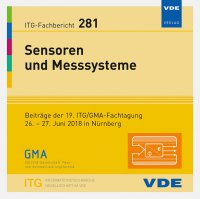Autonomous Low-PowerWireless Universal Sensor Module with a Custom Pulse Amplitude Modulated Chlorophyll Fluorometer
Conference: Sensoren und Messsysteme - 19. ITG/GMA-Fachtagung
06/26/2018 - 06/27/2018 at Nürnberg, Deutschland
Proceedings: Sensoren und Messsysteme
Pages: 4Language: englishTyp: PDF
Personal VDE Members are entitled to a 10% discount on this title
Authors:
Reimer, Julian; Stoecklin, Sebastian; Reindl, Leonhard (Albert-Ludwigs-Universität Freiburg, Germany)
Abstract:
Measuring chlorophyll fluorescence is an important tool in plant research, since it is a reliable, non-invasive measurement of photosynthesis activity and hence an indicator of plant stress/health. There are two main types of mobile chlorophyll fluorometer on the market. Handheld devices, which are very limited in functionality and accuracy since they usually do not use a modulated signal. The other category consists of big devices carried in backpacks, which are heavy, costly and have a large power consumption, shown by the example in [1] that has a weight of 1.5 kg, a size of 1464 cm3 and too expensive for huge-scale deployment. As this paper will show, a smaller, lighter and cheaper device can be built with sufficiently low energy consumption to even be powered by energy harvesting, which is required for projects with large number of sensors and autonomous measurements. The device can be used in a mobile way as well for stationary unsupervised measurements, being light enough to be attached nearly anywhere such as tree branches. To decrease power consumption of wireless communication, a popular solution is the use of passive on-off-keying receivers, that are used e.g. in the context of wake-up receivers. But as they have very limited sensitivity [1], they are not suitable for long-range applications. The presented duty cycle approach is capable of having an active two way communication and archieving an a range of at least 1.5 km (open field) while having an average energy consumption of 124 mw while listening for packets at a period of one second. If every 3 seconds a package is transmitted and the client answers with 3 byte the overall average energy consumption for the slave would be 150 mw for the sensor node.


